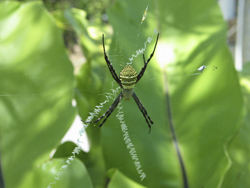Protecting the origins of biodiversity
The 'Origin of biodiversity in Gondwanan Arthropods: from phylogeography to phylogenomic' (Gondwana) project set out to explain current patterns of species’ richness and why organisms originate in a specific area. In order to understand how present diversity emerged and responded to past climate change events it was essential to test a number of different hypotheses. The resulting data can enable scientists to predict the future effects of climate change and how best to prioritise strategic conservation objectives and manage biodiversity. Scientists generated and analysed data from every aspect of biodiversity research, focusing on objectives related to the different levels of organisation found in evolutionary biology. Population level studies investigated the effect of ecological and geographical factors in forming and maintaining distinct lineages and observed genetic divergence and the flow of genes from one population of the same species to another. Studies at the phylogenetic level combined information from the fossil record with molecular sequence data to investigate the timing of the origin and diversification of different groups. This provided a framework for studying macroevolutionary processes and compensated for gaps in the fossil record. In addition, researchers were able to characterise the diversification of species through time in a given region and to examine how past climate and geographical events can be related to shifts in species diversification. Threat status alone should not be the only factor when assessing the importance of conserving different species as molecular sequencing in ecological niche modelling can help scientists predict shifts in geographic range due to climate change. Therefore, scientists were able to use findings from the Gondwana project to provide a greater understanding of habitat loss, climate change and other drivers of biotic change. Evolutionary studies such as Gondwana can help prioritise geographical areas for carrying out conservation activities. Knowledge about where unique evolutionary events or processes occurred can complement diversity information thereby enabling scientists to preserve existing species as well as the processes that generate this diversity.







